10 Proven customer retention tactics + Examples and strategies from top brands
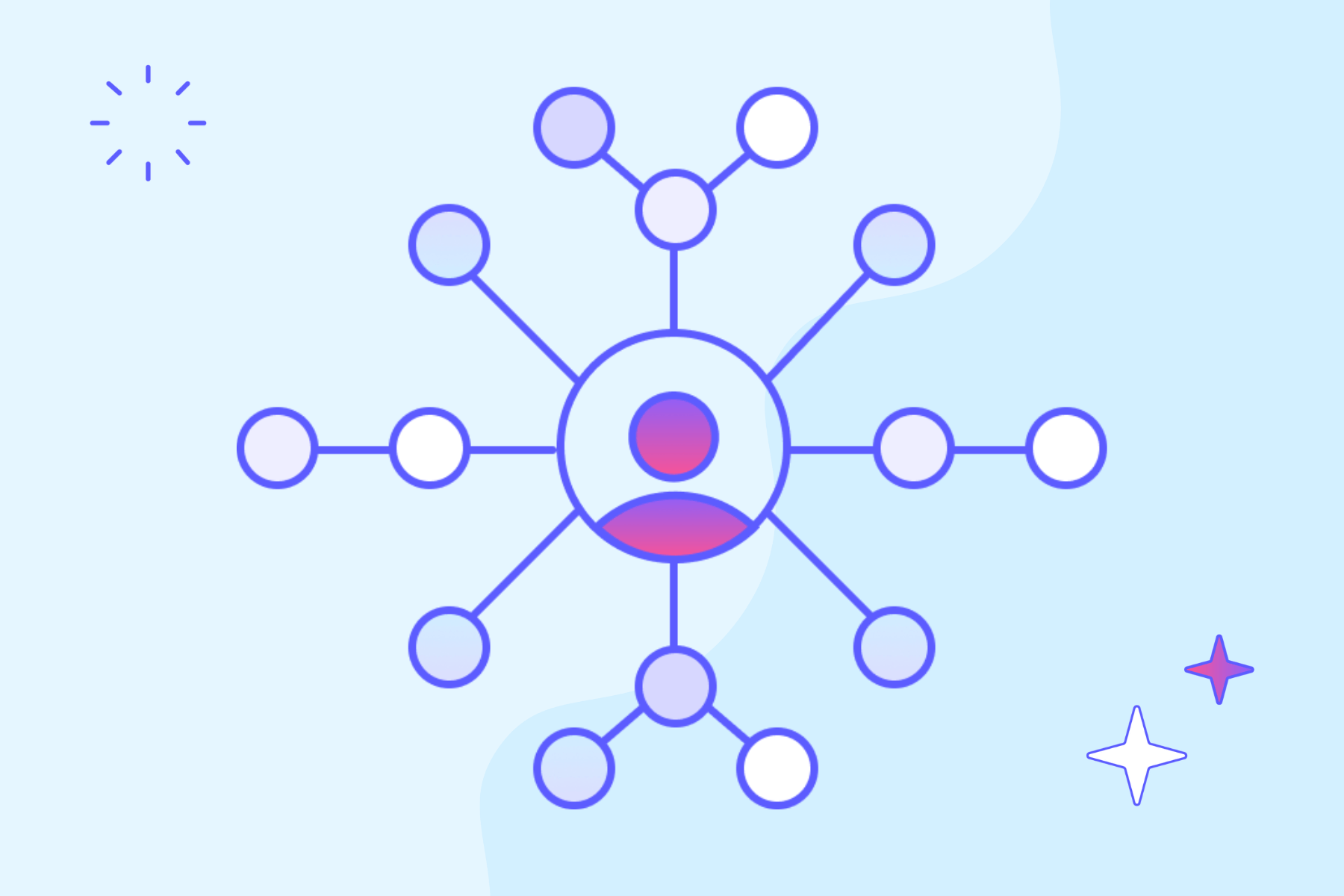
.png)

.png)
A SaaS business isn’t sustainable if it doesn’t retain its customers. Negative retention—aka churn—is bad. But if you're experiencing high churn rates, take comfort in the fact that you're not alone.
Here’s how you can enhance your customer retention rate, each strategy backed by a clear understanding of why it matters and how it makes your customers feel more valued.
Customer retention is generally used to refer to a company’s strategy for keeping existing customers engaged and loyal. It involves a series of plans and customer retention metrics that can get people to keep buying your products or services as opposed to buying from a competitor or not purchasing at all.
It’s important to note that customer retention focuses on the customers you have right now. This is different from customer acquisition which aims to bring your business new customers. Retention is preferred over acquisition as the latter can cost more. Meanwhile, targeting existing customers implies fewer costs as it’s easier to get in front of them and keep them loyal to the brand.
These strategies also differ from customer win-back (or customer reactivation). This focuses on bringing back former customers who have stopped engaging with a business, using dedicated campaigns that can address churn reasons and reignite their interest.
Customer retention is often overlooked despite being the first thing many businesses should focus if they want to keep growing. We've already mentioned how retaining existing customers is more cost-effective than acquiring new ones. But it's also worth noting that loyal customers can spend more and refer others, becoming more valuable than a new customer over time.
According to the Harvard Business Review, even a modest 5% increase in customer retention can boost profits significantly. That’s because loyal customers tend to have higher lifetime value and lower acquisition costs.
Retention goes hand-in-hand with loyalty. Satisfied customers are not just more likely to buy again—they're also your brand’s cheerleaders. Beyond their own repeat business, they're likely to become brand advocates, creating an organic buzz that money can’t buy. Prioritize their satisfaction, and they’ll help your customer base grow without you having to lift a finger.
McKinsey’s 2024 Customer Experience and Loyalty Report highlights that businesses with personalized, experience-driven strategies are more likely to foster customer loyalty. Furthermore, a Deloitte report emphasizes the role of customer service as an essential driver of retention and long-term success—even for businesses that have a hard time differentiating themselves.
One key long-term benefit of customer retention is that it lets your business better meet consumer expectations by focusing on retention. If a customer ticks with your brand for longer, you can learn more about their preferences and send them custom offers and messaging will help you gain their trust. Additionally, a loyal customer base acts as a brand promoter that can drive word-of-mouth referrals and even improve your brand’s reputation.
On the flip side, declining customer retention can signal a drop in overall customer experience quality. Forrester’s Customer Experience Index shows that customer-obsessed organizations consistently outperform others in terms of revenue, profit growth, and retention. Companies that prioritize customer satisfaction and consistently exceed expectations achieve higher retention rates, while those neglecting this aspect often face shrinking profits and market share.
The very first customer retention strategies were simple. Back in the 1950s, repeat customers would have punch cards that could earn them free items after a certain number of purchases. This was popular in coffee shops and diners and it's still used by brick-and-mortar businesses.
Fast forward to the 80s, and we're entering the era of points-based loyalty programs. The travel industry introduced one of the first customer retention innovations with frequent flyer programs, rewarding travelers with points for future flights. The 1981 American Airlines' AAdvantage program set the standard for loyalty programs in other industries as well.
In the 1990s, data started influencing the way customer retention was done. Customer relationship management (CRM) systems facilitated customer behavior tracking. With businesses now knowing more about their customers' preferences, more personalized was possible. Email marketing added to this, enabling businesses to send targeted offers and discounts. This is also when Amazon began using their very first custom product recommendations by taking into account past purchases, pioneering data-driven marketing.
The 2000s were all about personalization. Businesses started to invest in customer journey mapping and nurture campaigns. This involved sending targeted emails and offers at various stages of the customer lifecycle. With the rise of ecommerce, many businesses transitioned loyalty programs to digital platforms. Starbucks introduced a mobile app to reward loyal customers with points for purchases and personalized offers.
In recent years, customers have begun interacting with brands across multiple channels. Hence, businesses needed cohesive strategies across all touchpoints.
In particular, in the 2020s, retention strategies shifted to focus heavily on delivering exceptional experiences across all interactions. Businesses are now using AI, chatbots, and automation to drive personalization and real-time engagement. Subscription-based models, like Netflix and Amazon Prime, are popular for ensuring long-term engagement and predictable revenue.
Getting a clear view of your retention metrics provides insights into the effectiveness of your engagement strategies, helping you fine-tune your approach to keep your fan base growing and thriving. Key customer retention metrics include:
Customer retention is, in and of itself, a metric. It’s the most important metric to track as you work to improve your customer retention strategy.
To measure it, choose a time period—quarterly or monthly usually works—and calculate the following numbers:
Then, you plug those numbers into the customer retention rate formula, which goes like this:
(Number of customers at the end of the period - number of new customers acquired during the period) ÷ number of customers at the start of the period x 100 = Customer retention rate
Let's say you had 200 customers at the start of the quarter, acquired 40 new customers during the quarter, and had 220 customers at the end of the quarter.
Plug these into the next formula:
(220 - 40) ÷ 200 x 100 = 90
So, your customer retention rate for the quarter would be 90%
Customer churn rate tells the percentage of your customers who leave over a particular period.
It’s pretty easy to calculate. Here’s the formula:
(Number of customers lost during the period ÷ number of customers at the start of the period) x 100 = Customer churn rate
Let’s say you had 1,000 customers at the beginning of the month and you lost 50 customers during that month.
Plug these into the formula:
(50 ÷ 1,000) x 100 = 5
That means your churn rate was 5% for that month.
Customer lifetime value (CLV) transcends the discussion of retention, but increasing customer retention naturally improves CLV.
In any case, it’s a critical metric for many aspects of your business. Here’s how to calculate it:
Average purchase value x purchase frequency x customer lifespan = CLV
Start with the average purchase value. For most SaaS companies, that will be a fairly stable subscription payment. But if you have multiple subscription tiers or another complicating factor, make sure you’re actually averaging the purchase value across the entire customer base.
Then move to purchase frequency. If all of your payments are made monthly and you’re measuring CLV for the past year, your purchase frequency is 12.
That’s the simplest possible example—make sure you’re getting an accurate number for your situation by dividing the number of purchases over the measured time period by the number of customers over that same period.
Finally, account for customer lifespan. Average out how long customers stay with you in months or years (whatever makes most sense for your current system of metrics).
Now, put it all together. Let’s do that with an example:
Let's say your business had a total revenue of $100,000 last year, with 2,000 purchases made by 500 unique customers. Your average customer continues to make purchases for 3 years.
Plug these into the formula:
$50 x 4 x 3 = $600
That puts your CLV at $600.
Since customer retention actually starts at the back of user acquisition, there’s value in analyzing the front of the funnel. If your teams are bringing in leads that aren’t the best fit for your product, churn can quickly spin out of control.
Say you have 5 bad fit customers that churn at $50k annual recurring revenue a pop. That’s $250k a year that your business is no longer earning! Over 5 years, that becomes $1.25 million lost—or on the flip side, $1.25 million in churn you can negate by onboarding 5 great-fit customers instead.
As you think about customer retention strategies, start at the beginning of your user’s journey.
Are you promising features through product marketing that you can’t deliver? Are you bringing in users whose needs don’t match your value proposition? If so, these new users are at risk of churning.
Pursuing customer acquisition doesn’t mean much if your churn rate is high. That’s why you should look at things like KPIs, customer retention metrics, and customer lifetime value—aka, the value your product provides to customers over their lifetime.
Customer success is all about customer fit. Start by revisiting or creating buyer personas (yes, for unfit customers, too) to help you develop an ideal customer profile (ICP). Then, align your entire team—sit down with every department and ensure that everyone knows the exact customers you’re targeting.
Effective customer acquisition is a team effort, so make sure to facilitate open lines of communication between marketing, sales, customer support, and product development. Use meetings or Slack channels to communicate internally about your ICP or buyer personas.
Establish a lead qualification framework so that your marketing and sales teams know which leads to sell to or ignore. Teach your support team how to spot a bad-fit customer in their pipeline and how to deal with them. Assist your development team in communicating transparently about product updates—whether through pop-up alerts, release notes, or tool tips.
Turn to user segmentation for more effective targeted messaging that increases the quality of your leads. Domino’s used Segment to launch Facebook and Google ad campaigns targeted at specific customer personas.
By identifying its target audience, Domino’s ensured it would deliver the right messaging to the right people at just the right time—pulling in the right leads. The results? A 65% decrease in cost per acquisition and incremental increases in conversions for both customer acquisition and customer retention.
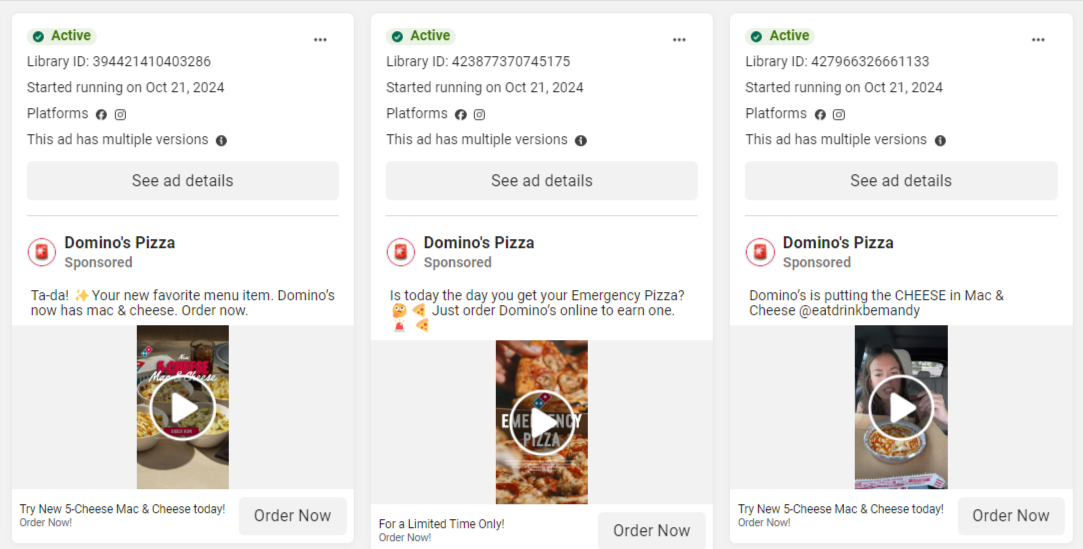
Now that you’re bringing in the right leads, make sure to set them up for success. User onboarding is the most important part of the user journey. You could be losing up to 75% of your new users within the first week because of a poor user onboarding experience.
As a general rule, the more you guide and educate your first-time users, the more likely those leads become long-term customers. Focus customer education on product features in a way that pushes customers to the “wow moment.” This is the moment when a user experiences their first big success with your product. At this point, they see how your product actively improved their issue, and now they’re hooked. Users who never reach this “wow moment” are almost certain to churn.
Add more resources, education, and one-on-one engagement into your onboarding process. The quicker your product becomes a part of a user’s daily life, the better your chances are of retaining that customer.
Let’s look at how Trello onboards customers and guides them to their “wow moment” faster. After signing up, customers can create their first board or see the product in action via their public Template Gallery.
Here, customers can quickly understand how Trello works by checking out a variety of use cases. Then, they can copy any templates they like for immediate implementation. Trello also includes friendly pop-ups to highlight useful features so that users can learn as they go. If new users need a hand, Trello offers a help center with robust, visual resources.
.jpeg)
Extra Reading: Minimum viable onboarding: The 3 essentials to great user onboarding
Loyal customers are the best, as they’re more likely to make repeat purchases and recommend your business through word-of-mouth and referrals. A customer loyalty program can offer your users tangible rewards and reasons to stick with your company for the long term.
A 2023 study reports that 81% of consumers who hold a loyalty program membership feel it influences their purchasing decisions. Additionally, 78% would choose to shop with a brand whose loyalty program they belong to, even over more convenient options.
You can boost your customer retention rate with these 3 loyalty program ideas:
Starbucks has one of the most famous customer loyalty programs, and it includes all three elements above. Customers earn points (which they call “Stars”) proportional to their order amount. Later, customers can redeem Stars for rewards that range from a free drink add-on to a free bag of coffee beans. Members get free refills on regular brewed coffee and tea, as well as a free birthday treat. Starbucks members also receive personalized offers to earn bonus Stars if they purchase certain items that they’ve bought before.
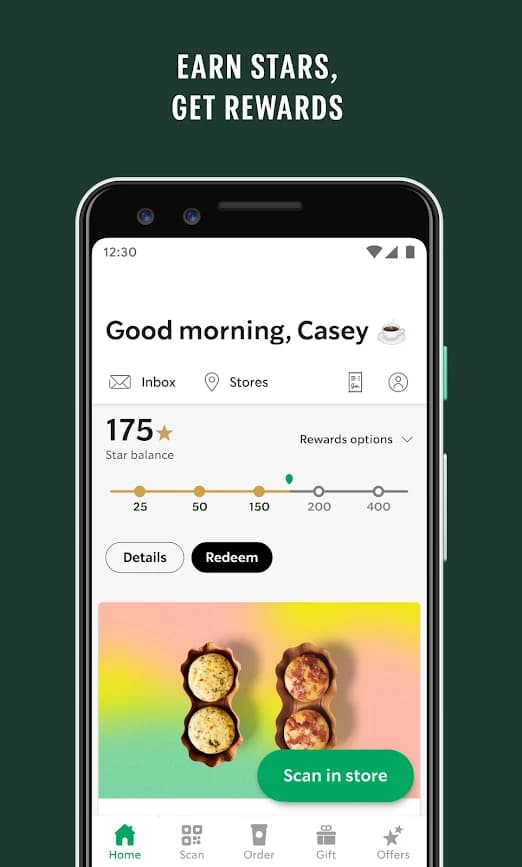
By the numbers, Starbucks’ reward program experienced great success—even following a dip in growth from the pandemic. In Q3 2024, Starbucks reached 34.3 million loyal members. Loyalty programs like the one from Starbucks make customers feel valued and boost retention while simultaneously generating insightful customer data that businesses can use to personalize offers and drive sales.
Have you ever picked one restaurant over another because of positive Google reviews? Or did you buy a product because your favorite Instagram account promoted it? Social proof affects how people perceive your business’ value—for better or for worse—affecting user acquisition and loyalty.
Consistently show your customers how other users are succeeding on your platform. Add testimonials and reviews to your website and integrate them throughout your marketing strategy and materials. Highlight successful customers via podcasts, case studies, or blog posts, and share them with your active user base.
Consider Salesforce and its suite of tools focused on customer relationship management and customer experience. Salesforce includes over 130 customer stories in its resource center that highlight exactly how its clients succeed with their platform. Website visitors can explore these case studies, drilling down by industry or use case (e.g. marketing, sales, small business, and financial services).
Each blog post shows how Salesforce helps its customers succeed—and features photos, quotes, metrics, and a step-by-step breakdown of that customer’s journey with Salesforce. These stories call attention to the success of previous and current customers but, more importantly, make that success accessible to new customers.
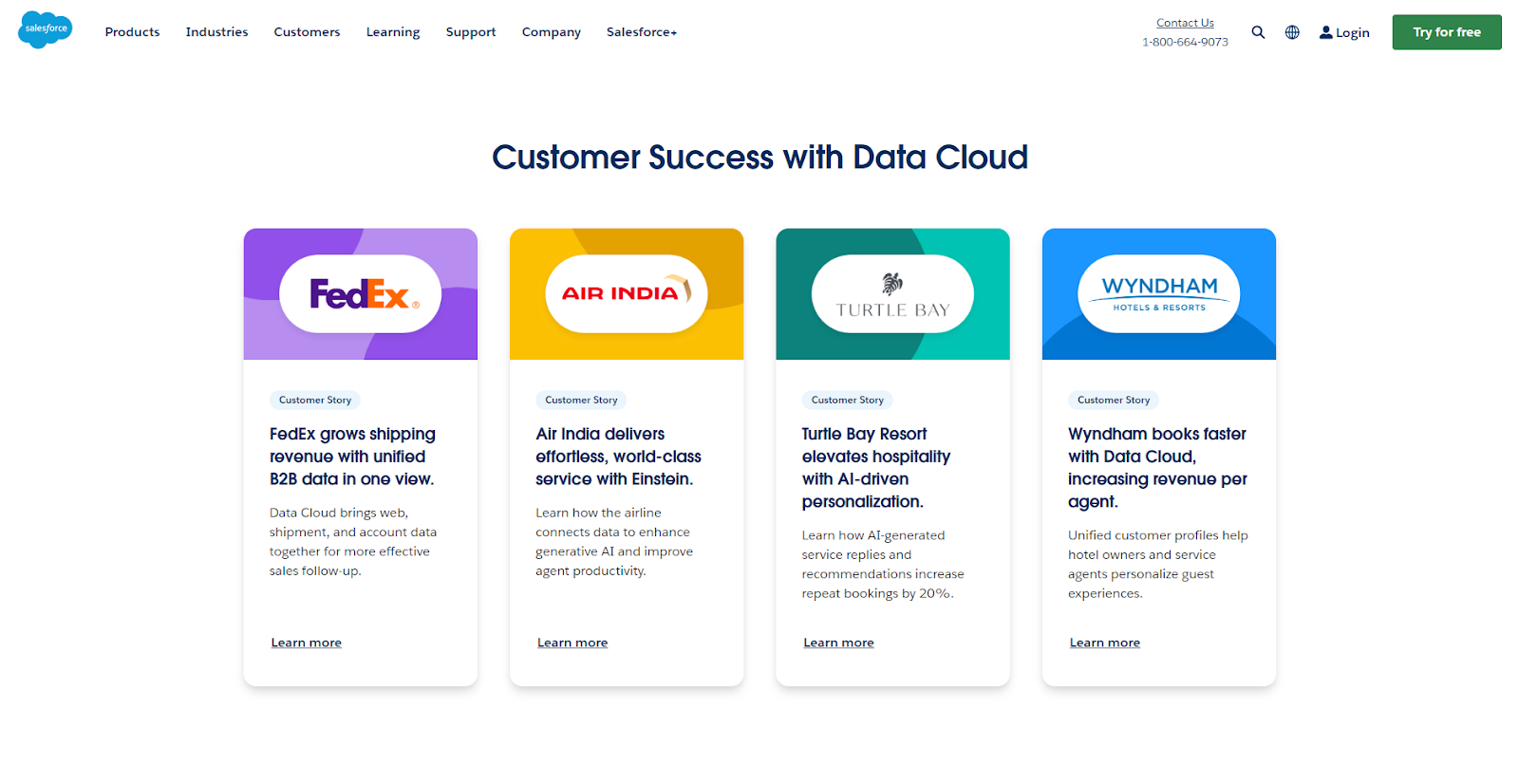
Exposing your customers to social proof not only inspires and encourages your customers but also educates them on the different ways they can leverage your product or service. Not to mention, people love to be featured and promoted for their successes. Aim to create customer stories on high-value customers to support your relationship with those accounts.
One of the core reasons customers churn is that they no longer see the value in your product. But sometimes, they simply may not understand the potential value they could be getting from your product. Consistently engage and educate your users to show them how your product benefits them and how they could leverage it more effectively.
As your customers advance, their needs will ebb and flow. Constant communication and education are key to continually proving your worth. Education is a multi-department effort involving your customer success, content, and marketing teams. Address customer concerns and questions on your blog or through webinars. Automate email campaigns to deliver educational and value-adding content to your customers, such as new feature releases, customer highlights, product hacks, and more.
You Need a Budget (YNAB) is a budgeting tool that takes its customer education so seriously that it’s a focal point of both its marketing and customer retention strategies. YNAB hires teachers who specifically educate users on how to get their full money’s worth out of the platform, hosting free budgeting workshops and live Q&A sessions almost every day. Its website includes blogs, video courses, podcasts, and guides. Meanwhile, its weekly newsletter includes product updates and short informative tips.
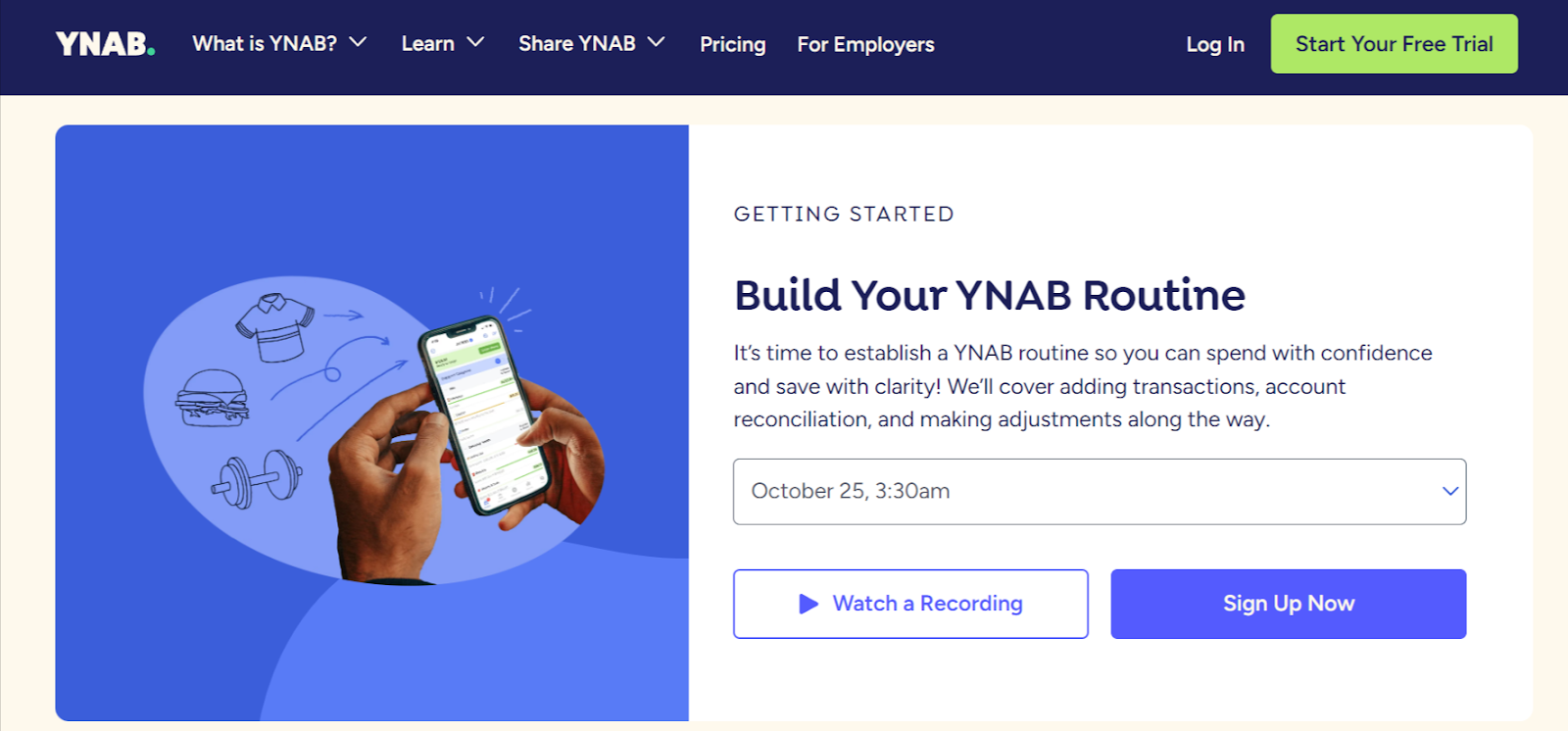
Creating these kinds of resources will not only benefit your users but your team as well. As your support team sees trends in questions, your content team can whip up posts to address them. Your sales team can also work to address common pain points in demos and webinars. This collaborative work will educate your customers and decrease the amount of time your customer service reps spend answering questions.
Involuntary (or passive) churn is the easiest revenue leak to plug since these customers don’t intentionally leave your product. Unlike the customers who churn due to an issue with the product, these customers churn because of billing issues.
It’s common to think failed payments and billing issues aren’t that big a deal for your bottom line; what are a few failed transactions? Up to 50% of your total churn could be attributed to those failed payments.
Luckily, some of these payment failures can be automagically recovered through proper dunning. The latter refers to communicating with your customers to ensure payment of your accounts receivable.
Start by revising your current dunning system. How much work is your support team putting into recovering failed payments? How often are these attempts successful? You’re likely letting far too many customers slip through the cracks and burdening your support team with unnecessary work.
You should never lose a customer involuntarily. However, manual dunning can be overwhelming for your team. Companies big and small rely on tools like Churn Buster, Chargebee, and ChargeOver to automate their failed payment recovery campaigns. Automation helps you plug the leak of involuntary churn without adding extra work to your CS team’s plate.
Churn Buster helped golf gear subscription service Short Par 4 retain an extra 21% of its subscribers every month. That’s 200 customers that Short Par 4 would have just lost! Compared to its manual payment recovery rate of 45% to 55%, automation helped the client recover up to 71% of its failed payments.
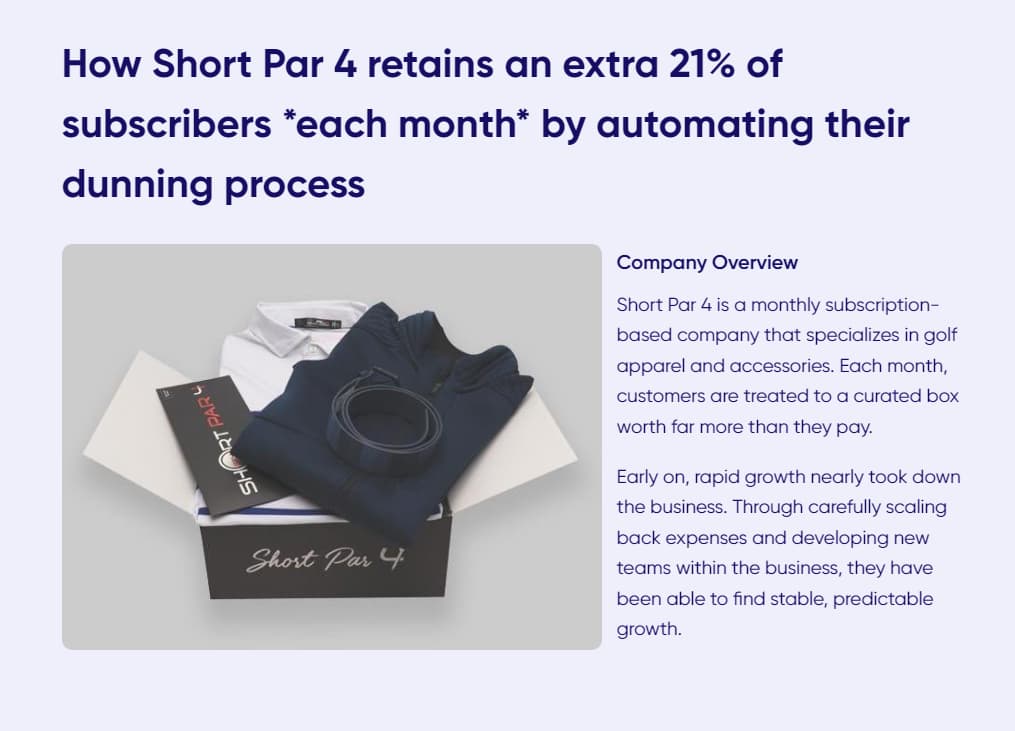
The more your customers engage with your product, the more it becomes an integral part of their lives. If you listen to Spotify every day or watch Hulu every night, it’s unlikely you’ll cancel those services. That means it’s likely that your customers who use your product infrequently are more likely to churn. Prevent customer churn by tracking and analyzing customer usage and proactively taking action to re-engage customers before they cancel.
Set up systems to monitor and flag user inactivity or activity that looks like someone may cancel soon, like visiting the pricing page or looking for ways to cancel. Tools like Braze Predictive Churn or CRM filters can flag those at-risk customers. Then, develop a system of communicating with those inactive users to re-engage them before or right after they leave. Consider using customer retention strategies like win-back email sequences and automated live-chat messages to prevent your support team from burning out.
These emails can be:
Check out this email from Appcues, which lets our customers know about new features they might not know we added.

Re-engagement communications help you reconnect with customers at the perfect moment, making them reconsider giving your brand another chance.
Customer insight is vital for improving retention and reducing churn. Understanding where your product excels and where it falls short in the eyes of your customers can drive your entire team to address concerns and improve customer satisfaction. Integrating customer feedback means that your product continuously improves and delivers a better customer experience.
And we don’t just mean responding to customer complaints and bad App Store reviews. You have to be proactive in seeking out feedback. Set up automated email campaigns to send surveys to your customers after a certain amount of time or engagement. Gather and track the responses. Analyze and share high-level insights with the whole team. Use the data gleaned to improve your product, hone your marketing tactics, and educate your customer success team.
Many top brands use the Net Promoter Score (NPS) system to ask users how likely they are to recommend their product or service on a scale, usually from 1 to 10. Usually, you can follow up with a quick question asking customers why they would give that rating. By combining a quantitative NPS rating with qualitative feedback, product teams can quickly evaluate successes and pain points.

With Appcues, we use NPS to glean insights from our users with an easy 1-question survey. Experimenting with where, when, how, and who we prompt for feedback has helped us increase response rates and get a steady stream of input from our users. We go above and beyond with our NPS data, using it to align our product development teams. We also automate customer interactions thanks to integrations with services like HubSpot. All in all, NPS helps us keep a finger on the pulse of our customer satisfaction—figuring out what works and what could be improved.
A simple “Thank you” can go a long way toward boosting customer retention.
Your customers didn’t have to choose you. But they did. And you should thank them for it.
It’s a nice thing to do and it humanizes your brand and the customer experience.
Spotify’s Wrapped notes at the end of each year may be one of the highest-profile examples of a major brand saying thank you. Another great example but perhaps less popular comes from TD Bank with their "TD Thanks You" campaign.
The bank personally thanked over 20,000 customers by turning ATMs into "Automated Thanking Machines," dispensing personalized gifts such as vacations, scholarships, and more. The campaign generated over 25 million views on YouTube, sparking a strong emotional connection with customers and positively impacting brand loyalty. While not directly tied to retention metrics, the overwhelming positive response was a clear indicator of increased customer engagement and loyalty.
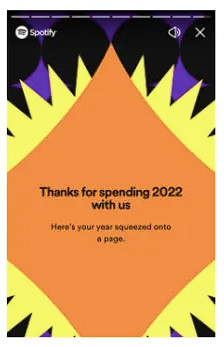
A simple “Thanks for spending [year] with us” has carried Spotify far.
In 2019 alone, at least 1.2 million tweets mentioned Wrapped shortly after it came out. That’s not a 1:1 for customer retention, but it’s almost certainly a positive indicator.
Community is an incredible motivator. Brands that create thriving communities surrounding their products and services also create one of the most powerful customer retention strategies there is. According to a Higher Logic survey, 88% of community professionals say that providing access to a community enhanced their customers' experience.
Customers aren’t just coming back for the brand or its products or services. They’re coming back for each other. And what they get out of interacting with each other—knowledge, connection, a sense of belonging, and so on.
That’s powerful. And it works wonders for Airbnb, which has created an online community for its hosts.
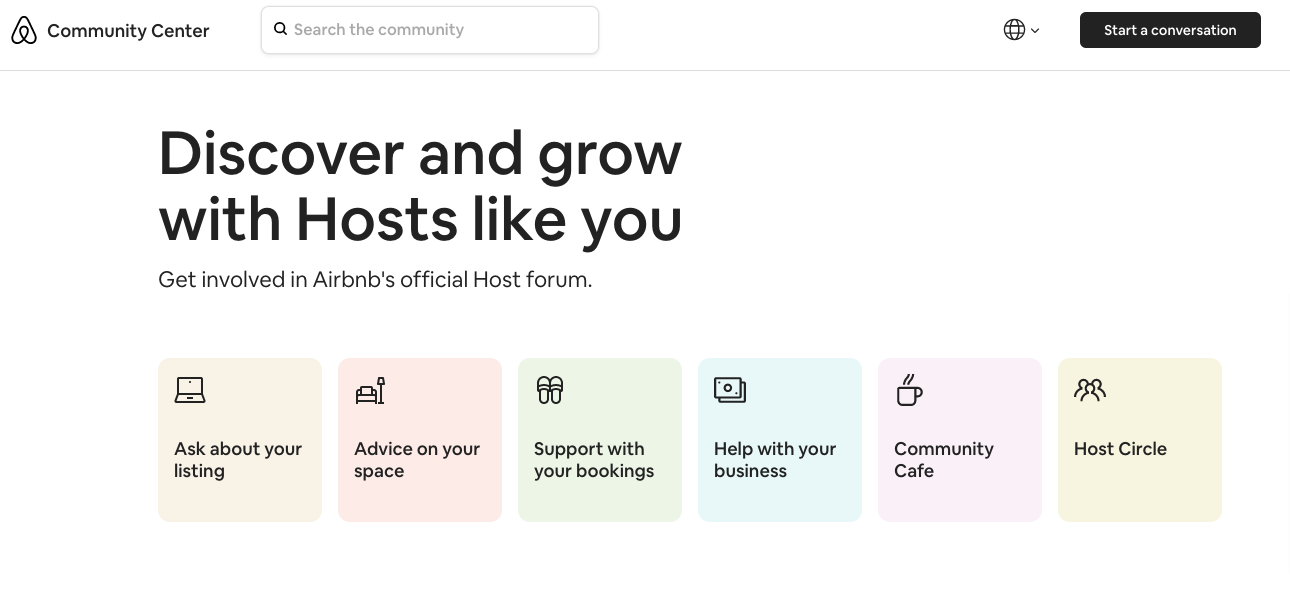
The community center allows hosts to connect with one another, ask questions, share tips, troubleshoot, vent, and even set up in-person get-togethers.
Each of those hosts is an important part of Airbnb’s network (and ability to bring in revenue). And the community makes them feel important. That’s a perfect recipe for customer retention.
You should also be aware there are a couple of challenges you’re likely to encounter in your customer retention program. Here’s what to expect and how to address or prevent them altogether:
Customers now expect personalized, seamless interactions and quick resolutions across all touchpoints, making it difficult for businesses to meet these elevated standards.
How to address this: Invest in advanced customer service tools, staff training, and automation to enhance responsiveness and personalization. Try to gather feedback on the go to get a better feel of evolving expectations and ensure services are tailored to customer preferences.
With numerous competitors offering similar products or services, retaining customers becomes challenging as they can easily switch providers for better deals or experiences.
How to address this: Focus on differentiation through unique value propositions, loyalty programs, and excellent customer service. Regularly analyze competitor strategies to stay ahead by innovating and refining offerings based on market trends.
Inconsistent or poor experiences—whether in service, product quality, or communication—can quickly drive customers away.
How to address this: Maintain the same level of service quality across all channels and touchpoints, ensuring consistency. Use your data and customer feedback to continuously refine the customer journey and resolve pain points swiftly.
As customer preferences and expectations shift, you might struggle to adapt on time to deliver the products and services they seek.
How to address this: Analyze customer behavior and market trends at all times. Don't just proactively update your products and services. Go beyond your offering to create custom engagement strategies that can help you stay top of mind for customers despite the constantly changing demands.
Keeping your existing customers is key to making it in the long run. By using customer retention strategies to keep your customers happy, you’re not just protecting your business, you’re future-proofing it. Let these customer retention examples inform your own retention strategy and watch your revenue rise.
Chasing after a bad churn rate with just any tool can feel like trying to fix a leaky faucet with a hammer—frustrating and futile. But don’t worry, we’ve got the right tool for the job. Say hello to Appcues: your friendly neighborhood retention hero.
Why Appcues? Because we get it. Onboarding and retaining customers can sometimes feel like hosting a dinner party that never ends. Appcues makes it effortless to roll out the red carpet for every user, every time they log in, with personalized flows, in-app messages, and oh-so-timely nudges that show your users just how much you care.
Appcues is a customer retention tool that’s all about:
Keeping your users coming back is about more than just great features; it’s about making them feel valued and understood. And with killer features, terrific customer support, and a stellar user experience facilitated by Appcues, you're not just retaining customers—you're delighting them.
Let Appcues help you make every user interaction feel like a part of something bigger, something better!
The 3 R's of customer retention are Retention, Relationships, and Rewards. Retention involves keeping customers by consistently delivering value. Building strong relationships fosters trust and loyalty through personalized interactions. Rewards, such as loyalty programs or special offers, encourage repeat business.
While there's no secret recipe that will ensure you're keeping your customers, it's worth focusing on staying authentic and delivering consistent value. This involves understanding customers' needs and pains so you can build a better relationship with them through excellent service and personalized experiences.
To retain customers, use strategies that fit your customers' needs. As outlined in this article, methods like improving customer service, loyalty programs, and personalized offers can help, but you'll need to tailor them. Identify what keeps customers engaged, monitor their preferences, and align these efforts with your budget